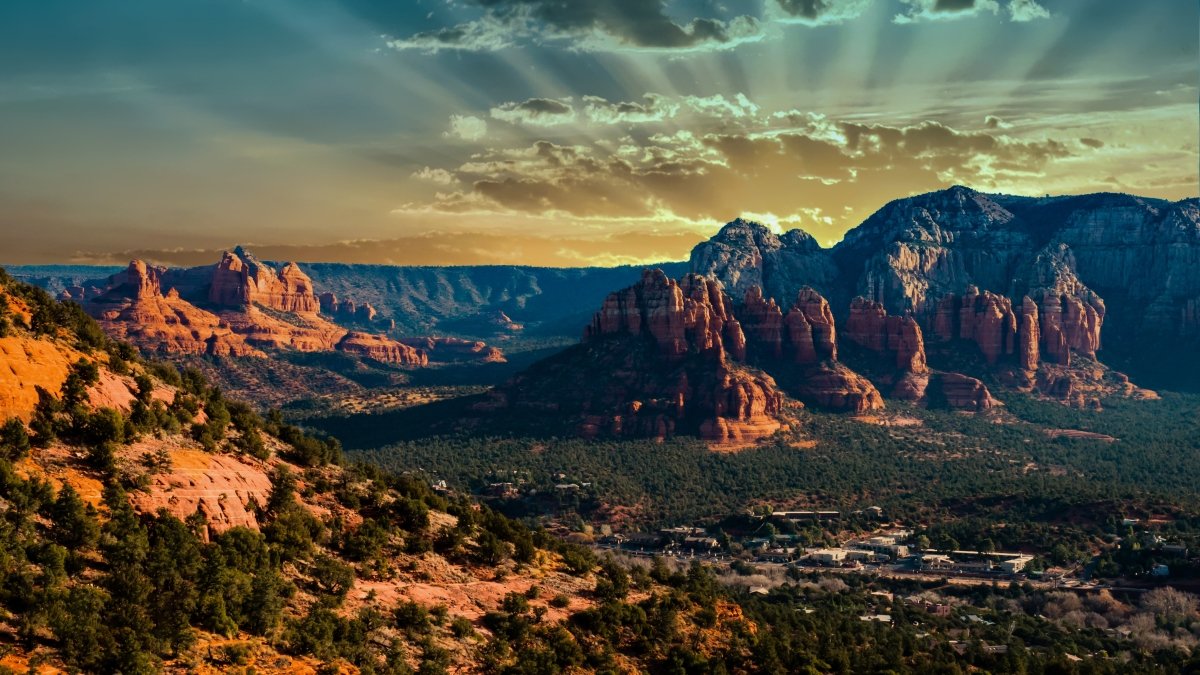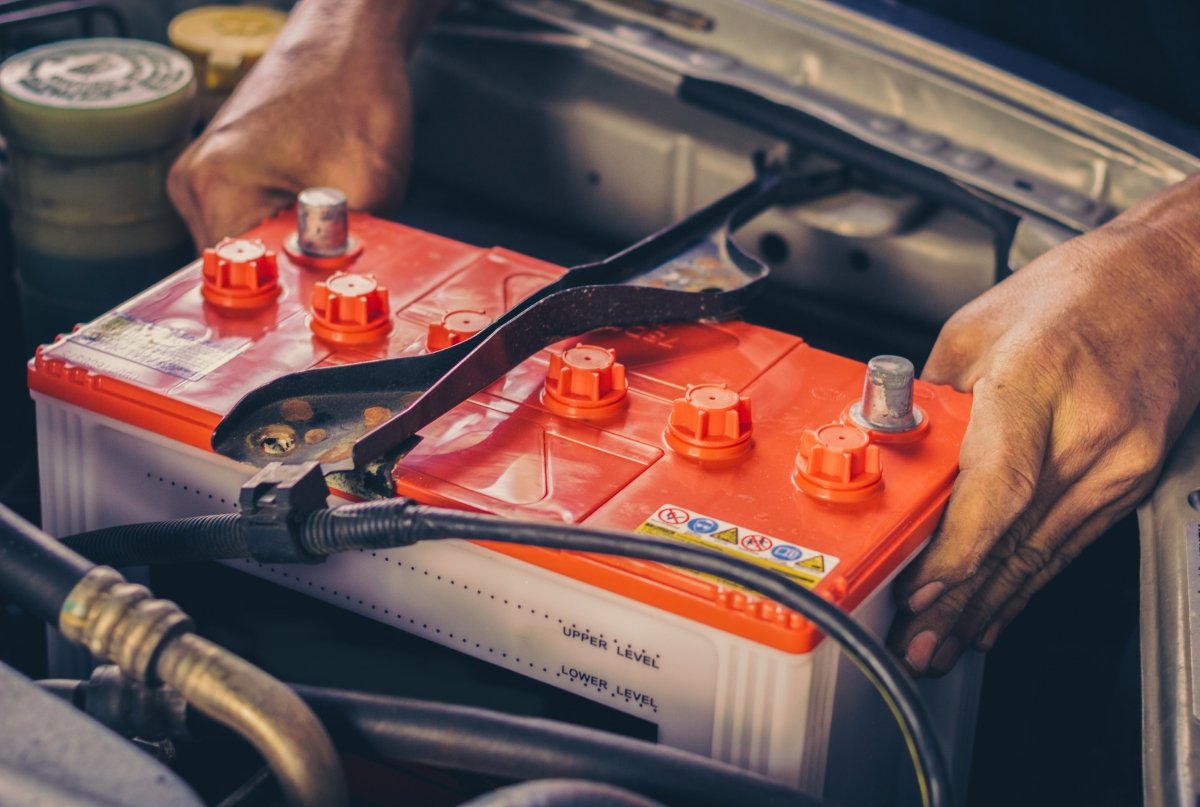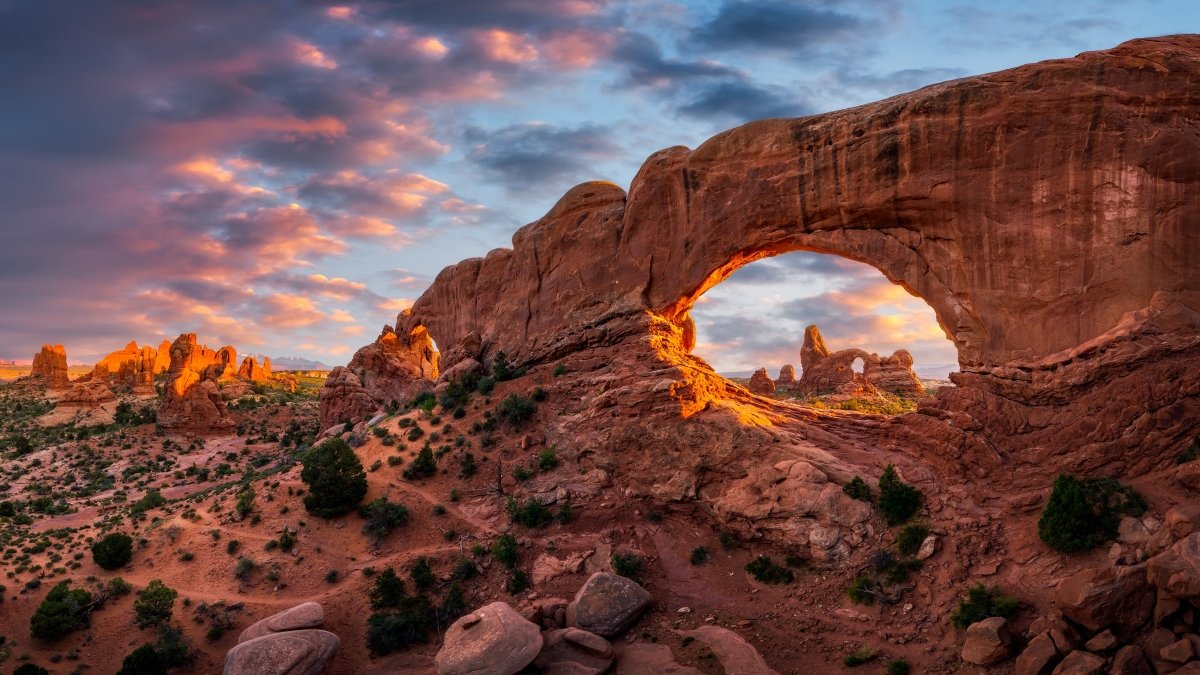Sedona is a popular camping destination due to its stunning natural beauty. The area is known for its red rock formations, rugged mountains, and desert landscapes. Campers have the time of their lives hiking, biking, and horseback riding.
Camping in Sedona is also popular due to its mild weather year-round, making it an excellent spot for camping during all seasons. Come to Sedona to connect to nature with lush forests and breathtaking views. Camping in Sedona allows you to explore the unique landscape and experience its beauty up close.
While there are designated full-service tents around Sedona, dispersed camping is also allowed. You can find suitable dispersed camping spots in the wilderness, surrounded by incredible natural beauty.
This article will help you find the best dispersed camping spots in Sedona. We will also give you tips and advice that will help you get the most out of dispersed camping in Sedona. Is your RV ready? Let’s go!

Best Places to Camp in Sedona, Arizona
Sedona is the perfect destination for those who want to experience nature and reconnect with the outdoors. With a variety of camping options ranging from free dispersed camping to full-service campgrounds, Sedona offers something for every type of camper. Here are the best dispersed camping spots to experience the best of the outdoors for free:
1. Pumphouse Wash (Forest Road 237)
Pumphouse Wash (Forest Road 237) is a popular dispersed camping area in the Coconino National Forest along SR 89A, midway between Flagstaff and Sedona, Arizona. This area offers an array of recreation opportunities, such as hiking, biking, and fishing, as well as plenty of spots for dispersed camping.
Its convenient location near some recreation sites makes it an ideal spot for a dispersed camping adventure. Pumphouse Wash is a great spot for those looking to enjoy the beauty of nature and experience the wilderness.
The Pumphouse Wash area is designated for dispersed camping. Go through State Route 89A north from Sedona, turn right onto Forest Road 237, and then look for the signs showing the designated campsites. You risk being fined if you camp outside of these locations.
2. Schnebly Hill Road
Schnebly Hill Road is a popular dispersed camping area in Sedona. It is popular for its breathtaking views of the red rock formations. It is also known as Forest Road 153, or FR153. It's incredibly simple to reach this road from Interstate 17, and once you descend Schnebly Hill Road, fantastic camping areas are immediately visible. The best camping areas in this area are near Interstate 17.
To reach the really good campsites, you must travel quite a distance down the road from Sedona, or from the west, which makes accessing this area more challenging. Additionally, Schnebly Hill Road is much rougher on this side, so only people with high-clearance, 4WD vehicles and those with experience driving down rough roads should take it into consideration.
All of the campsites located alongside this road are evenly spaced out and offer visitors breath-taking views, regardless of where you enter it from—Interstate 17 or Sedona. There are no water sources along Schnebly Hill Road, so be sure to bring plenty.
3. Loy Butte Road (Forest Road 525)
Loy Butte Road, also known as Forest Road 525, is a dispersed camping spot located 10 miles southwest of Sedona, Arizona. It winds through Red Rock Country and offers an array of unique wild camping spots.
You can pitch a tent for several miles along the road, with the best spots for larger trailers and RVs located right off State Route 89A. Just be aware that the first section of the road is popular with dirt bikes and ATVs and is close to the highway, so there may be some noise.
For a more tranquil experience, use a high-clearance vehicle to venture further down the road. Please note that there are no restrooms or water sources in this area, so it is important to come prepared with your own supplies. For some outdoor recreation, don't miss the Loy Canyon Trail, which can be found at the end of the road.
4. Angel Valley Road
On the opposite side of State Route 89A from the previously mentioned Loy Butte Road, there is another dispersed camping area in Sedona. Its location is about 11 miles southwest of the city and goes by the name of Angel Valley Road.
The campsites will start to appear after you pass the Deer Pass trailhead, or after about a mile of driving, once you turn left to leave State Route 89A. Expect little in the way of privacy because most camps are flat and grouped together.
Angel Valley Road is a good option for camping in the Sedona area, despite not being quite as breathtaking as some other locations mentioned in this guide. If you discover that other dispersed camping areas are booked up, this is a great backup plan.
There are no facilities of any kind at Angel Valley Road, so you'll need to come prepared. Although the road is a little rough, most passenger cars can travel it fairly easily.
5. Coffee Creek
Coffee Creek is one of the most spacious dispersed camping areas near Sedona, located along State Route 89A, halfway between Sedona and the city of Cottonwood. It can easily accommodate many campers and the level of crowdedness varies depending on whether it is a weekend or not.
However, please be aware that this is a desert camping area and there is not much natural shade, which makes it important to bring your own shade and protection from the sun. To get there, you will need to drive south on State Route 89A and take a right on Forest Road 9571; the camping spots will appear on both sides shortly after getting off the highway.

6. East Pocket (Edge of the World)
Edge of the World (East Pocket) is a popular area for dispersed camping in Yellowstone National Park. It is one of the best places for dispersed camping in Arizona. East Pocket offers breathtaking views of Arizona's wilderness.
Although it takes a while to get here (East Pocket is located nearly 40 miles north of Sedona), the trip is very worthwhile. While driving slowly and carefully is required, it's not absolutely necessary to use a high-clearance vehicle.
It is located in the northwest corner of the park, near the South Entrance. There is no designated campground in the area, but visitors are allowed to camp anywhere on the open ground, provided that they abide by the park’s rules and regulations. Camping is free and the area is open year-round.
There are multiple trails in the area, offering spectacular views of the surrounding mountains. Additionally, visitors can enjoy numerous outdoor activities, including fishing, hiking, and wildlife viewing.
7. Lawrence Crossing
Compared to the other free campsites listed above, Lawrence Crossing Campground is a little bit further away from Sedona, but it's still a fantastic option, especially if you're traveling from the south.
Lawrence Crossing is free, so even though it's not a dispersed camping area, we wanted to include it on this list. It's a tiny, basic campground with few services.
The small number of campsites is situated next to a lovely creek. Tent campers do best at Lawrence Crossing. For RV or trailer camping, look elsewhere.
8. Forest Road 618
Forest Road 618 is situated just east of the intersection of State Route 179 and Interstate 17, 9 miles southwest of Sedona. Because the camping spots are spaced apart, you can expect more privacy than at Angel Valley Road.
The camping areas at Forest Road 618 are less crowded than others in the Sedona region, despite the fact that they are merely dusty pull-offs from the road. Additionally, they are all very simple to reach.
For any campers interested in visiting Montezuma Castle National Park, this location is a great option. The distance to the camping area is less than three miles.
Forest Road 618 doesn't have any water or restrooms. Take everything you'll need with you, and be sure to pack out all of your trash.
5 Things To Know Before Camping In Sedona
Here are 5 things to keep in mind when planning a camping trip to Sedona:
1. The Cold
When visiting Sedona, keep in mind that it is located at a high elevation, meaning that the evenings may be quite chilly. Be sure to bring appropriate clothing and supplies for these cooler temperatures. While Sedona is a desert town, the dispersed camping spots are elevated at a height of 4,300 feet above sea level. Expect snow in the winter.
2. Summer Rain & Thunderstorms
The mid-end of summer in Sedona is the rainy season! If you are planning on camping in Sedona during the months of July or August, it is important to plan ahead and bring tarps, waterproof bags for clothing, and other items to protect yourself from the rain.
It may be a good idea to plan your camping trip to Sedona for a different month, like April or October, when the weather is still pleasant but there is less of a risk of getting rained out. No matter when you decide to visit Sedona, it is an incredibly popular destination, and many people make the trip each year. Just remember to be prepared and plan ahead if you are visiting during the summer rainy season.
3. Free Camping in Sedona is Allowed, but Only in Certain Designated Areas
It is illegal to camp off-road anywhere in Sedona. The locations for backcountry camping in Sedona are typically far from water sources. Free camping is accessible at the spots listed in this guide. To make sure you are allowed to camp, look for the signs that say "Camping allowed." You can basically find free camping in Sedona east of the Schnebly Hill Vista; all you need to do is enter that address into your GPS, find it on a map, or spot it on the road.
4. Most Campgrounds in Sedona are Really Not that Remote
Sedona has designated camping grounds, and most of them are close to the city, so you're never too far away from amenities. For example, Oak Creek Canyon is close to one of the main roads leading out of Sedona.
Nonetheless, the campgrounds still offer incredible views of the iconic red rocks and a feeling of seclusion. Overlanding and RV camping are also popular in Sedona. There are plenty of campgrounds with enough space to accommodate RVs of all sizes. For those who aren't keen on tent camping, there are also cabins available for rent. There are lots of ways to camp in Sedona, so make sure to choose the one that best suits your style.
5. Wear Sunscreen and Sunglasses
You will likely be doing a lot of hiking, cooking, and setting up your tent, so make sure to protect your skin and eyes from the sun. Sedona is a desert environment; even though it experiences rain and snow, the light reflects off the red rocks and the red ground and can easily cause sunburn and damage your eyes and skin.
When is the Best time to Camp in Sedona?
The best time to visit and camp in Sedona is generally in the spring months from March to May, as well as in the fall from September to November. You will avoid the scorching summer temperatures and the cold of winter by visiting during this time. However, on the edge of these seasons, it is important to be prepared for very cold nights and even the possibility of snow! Make sure to pack warm clothing and supplies to ensure your camping trip is a success.
So, What Should I Bring?
When camping in the wilderness around Sedona, it is important to come well-prepared. This is due to the unique geographical location of the area, where the desert and mountains meet. This is especially true for dispersed camping, as a developed campground offers no amenities. It is essential to come prepared for the conditions.
Below is some stuff you need for a memorable dispersed camping experience in Sedona:
- Map: While you may think you have Google Maps, it’s a pity that Google needs an internet connection. That might be a luxury in the woods. You need a correct map to ensure that you are on public land. We recommend this National Geographic map. It gives a comprehensive overview of Flagstaff and Sedona.
- Camping Stove: When camping in a dispersed camping area, you need a camping stove because there are no cooking areas or campfire rings. You need a camping stove to cook meals, boil water, and keep warm in cold weather. It is also important to remember that open fires are not allowed in some dispersed camping areas in Sedona. A camping stove is the only way to cook food and boil water.
- Portable water container: There is no access to clean water in the woods. Mainly in the Sedona dispersed camping areas listed in this article. You need a portable water container.
- Cooler: If you come with food and drinks, you want to keep them cool. Sedona’s climate can be harsh.
- Mats: This is a no-brainer, but it is worth mentioning. There are no bedrooms in these dispersed camping spots. You need a camp mat.
Fire Restrictions
There are bans on fires to ensure the safety of wildfires in the wilderness. The following places have a complete ban on open fires:
- Oak Creek Canyon
- Pumphouse Wash
Please consult the local website to learn about fire restrictions where you are.
Enjoying a spectacular sunset (or sunrise!) against the majestic red rocks of Sedona is a truly magical experience, especially when you can take in the view from a free dispersed campsite.



